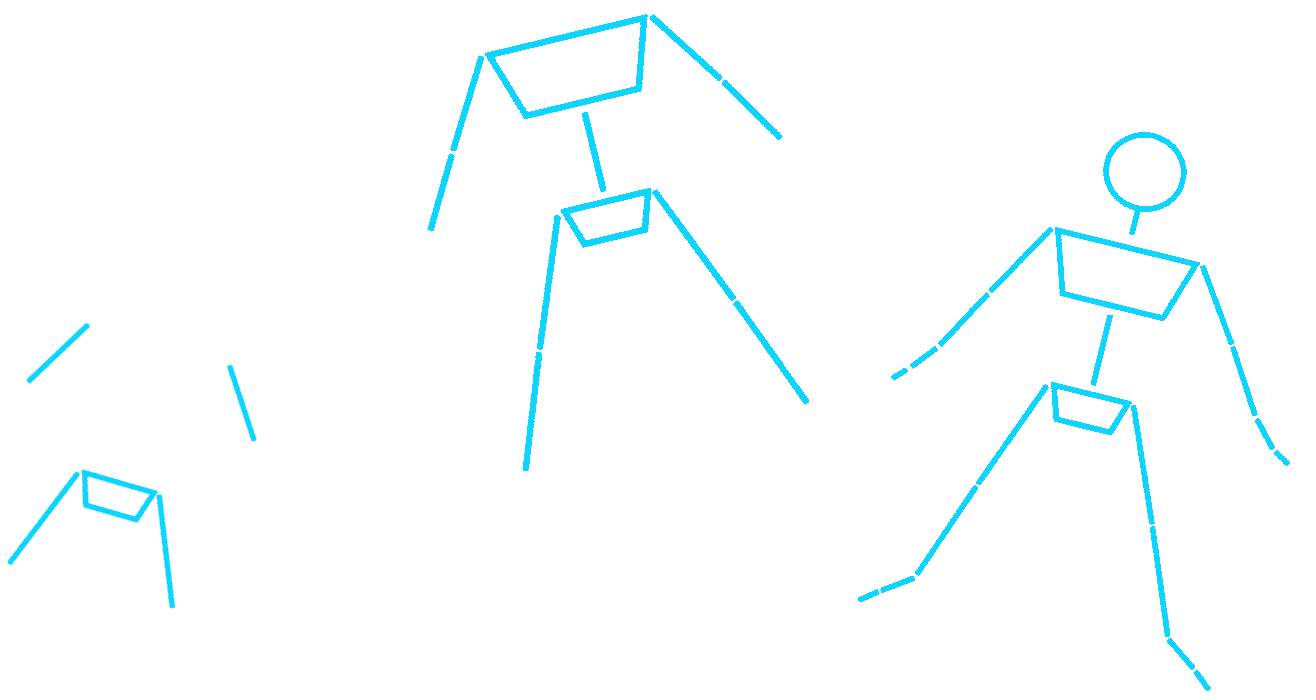
Nijinsky´s Movement Machines – by Claudia Jeschke, Constantin Georgescu and Rainer Krenstetter
Histories Croisées, intersecting histories in research and artistic presentation of dance and choreography, negotiate praxeologically exciting constellations that narrate dance less linearly or frame it in traditional-aesthetical codifications – rather they refer to the dynamic differences in its history/histories.
Within the spectrum of intersecting histories, the trajectories in Nijinsky’s Movement Machines, generate choreographically rigorously interwoven as well as poetic-performatively reinterpreted formats, thus offering insights into the materiality of dance that cannot be characterized as purely historical or purely contemporary (or as purely biographical or purely cultural), because dance execution and performance lead to continued – vital – cross-fadings of the time levels as well as the levels of assessment. Specific energetic fusions and transfers arise between cultural and personal narratives, memories, experiences, perceptions and reflections of (dance) artistic processes, historical references and technological medialisations.
(Text: Claudia Jeschke)
Vaslav Nijinsky’s Movement machines
Movement Machines: Writing Dancing
Movement Machines – Repertoire
Claudia Jeschke
Claudia Jeschke, Professor Emerita of Salzburg University, dance historian, reconstructor, choreographer, and curator. Along with her studies in Munich and a doctoral dissertation on the history of dance notation systems, Jeschke trained professionally in various dance forms. Her scholarly as well as practical expertise allows her to approach dance heritages ‘in actu’ on stage (e.g., the restoring of Nijinsky’s Afternoon of a Faune together with Ann Hutchinson Guest), as a curator of exhibitions, as an author of television programs and in academic teaching and writing. Her career included positions at the universities of Munich, Leipzig, Cologne, Salzburg, Linz; as a guest professor she taught internationally. Her extensive body of publications focuses on historical and theoretical dance issues as well as on movement analyses, notations, and scores and the discursive as well as praxeological transfers between these fields of research (recently: on the construction of ‘otherness’ in 19th century dance or her editorial work on Nijinsky’s Notation Notebooks).
Constantin Georgescu
Constantin Georgescu is a Romanian choreographer, dance teacher, and video artist currently based in Austria. Initially educated in Vaganova method of classical dance in Bucharest, he holds an MA in dance pedagogy from Anton Bruckner University in Linz, and is currently a PhD candidate in Applied Cultural Studies at Kunstuniversität Linz. His work as dancer and performer has brought him in contact with various stylistic and choreographic signatures. He has been a solo dancer at the Romanian National Ballet in Bucharest and at “Oleg Danovschi“ Ballet Theater in Constanta, Romania, and he was engaged at German state theaters in Augsburg, Saarbrücken, Braunschweig, and Tanztheater Bremen. During this time he worked with Urs Dietrich, Emanuel Gat, Marco Goecke, Tero Saarinen, Constanza Macras, Marguerite Donlon, Christian Spuck, Rami Be‘er, Ingun Bjornsgaard, Hans Henning Paar, Beatrice Massin, and others. He was artist in residency at CPI Seoul (2012) and at Seoul Arts Center (2014), Barker Theater in Turku, Finland (2015), Godsbanen in Aarhus, Denmark (2014), Teatro Viriato in Viseu, Portugal (2015), Danse Hallerne in Copenhagen, Denmark (2014), Radnet in Tromsö, Norway (2014), and Mejeriet Art Centre in Odense, Denmark (2012). Constantin worked as rehearsal director, choreographic supervisor, and training coordinator at the companies of Theater Sankt Gallen, Switzerland, and Landestheater Linz. Beside his independent projects and international guest invitations as teacher and choreographer, he is currently a teacher of the MA Movement Research studies at Anton Bruckner Private University in Linz.
Rainer Krenstetter
Rainer Krenstetter began his training at the Ballet School of the Vienna State Opera. In 1999, he was awarded with the Prix de Lausanne and accepted into the Royal Ballet School in London; in 2000, he became a member of the Vienna State Opera Ballet; and in 2002, he joined the Staatsballett Berlin under the direction of Vladimir Malakhov and went through the ranks up to Principal dancer. He joined Miami City Ballet as a Principal dancer in 2014 and gave his last performance in April 2022. In 2020 he was appointed Artistic Director of the Company Unblanche in Tokyo and in 2021 he became Designated Artistic Director at The Margot Fonteyn Academy of Ballet. Since leaving Miami City Ballet he is dancing as an international guest principal dancer all around the world. His broad repertoire includes the canonical heritage of classical ballets and also many recent and current works. Rainer Krenstetter received the 2016 Miami Life Award for „Best Classical Dancer“ and released a book „Not without Tears. A Life Lived on Stage“.